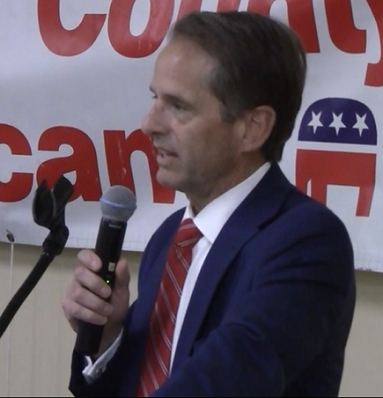CONVERSATION about choice in education generally centers on the positive effect such programs have for students. From academic gains to improved student mental health, the overwhelming research consensus is favorable.
We want to thank Commissioner Frank Edelblut for this Contribution – Please direct yours to Editor@GraniteGrok.com.
EdChoice publishes a report, The 123s of School Choice, that consolidates research in this area. Out of 187 research studies of school choice, 84% show a positive effect.
The benefits of education choice for students are borne out by decades of research. But choice can do even more. It can be the driving force that saves public education.
Demographic changes have significantly affected public education. Public school enrollment in New Hampshire peaked in 2002. Since then, the public schools have lost 46,000 students. This trend is negatively affecting both K-12 and post-secondary education systems. It is not expected to reverse in the foreseeable future.
As enrollment has declined, schools have experienced rising costs. A 22% decline in the number of students calls for savings, which isn’t always easy to achieve. Trimming costs in a dynamic commercial industry is tough enough. Trying to accomplish that in a public-sector industry is even tougher. The result is escalating costs that far outstrip inflation and strain the ability for citizens to support the school system.
We know that 2022 and 2023 have been filled with unsettling news that student performance is not where it should be. While everyone acknowledges the negative effect of COVID on student academic outcomes, as well as mental health, COVID made these declines worse. But it didn’t cause them. As the National Assessment Governing Board recently reported: “The pandemic worsened a pre-pandemic trend in math and reading among fourth graders.”
The Northwest Evaluation Association (NWEA), an assessment company used by many schools, reported this month that despite unprecedented additional funding to schools ($190 billion in COVID aid) and the efforts of educators across the country, accelerated student learning has not occurred. Fortunately, New Hampshire is bucking this trend, though student performance still falls short of our aspirations.
COVID highlighted another concern as well. During COVID remote instruction, many parents observed their children’s classroom instruction for the first time. This led to calls in New Hampshire and nationwide for greater transparency and greater input by parents into what their children are learning.
Today, parents and taxpayers are demanding unprecedented levels of flexibility, transparency and accountability from our public schools. The schools should be able to offer what parents want, but the system isn’t designed to be as responsive as parents rightfully insist that it be.
Here in New Hampshire, we’ve worked hard to make the system more responsive and flexible. We’re expanding public charter schools so that more parents will have a local public school alternative available for their children. We’ve created Innovation Schools, which allow public school districts some of the same flexibility charter schools enjoy. We created Learn Everywhere so students can get high school credit for learning that takes place outside the classroom. And we created Education Freedom Accounts so that lower-income parents can shop for the best available education for their children.
Critics claim that creating more options for parents will harm public education. On the contrary, giving families more choices will be the catalyst that helps public education satisfy all students’ needs.
Public education is filled with individuals who are smart, motivated and deeply caring. Educators want to serve children, and they’re not opposed to embracing innovative approaches and methods. But too often the system lacks the sort of flexibility that allows the private sector to respond more quickly to changing consumer demand.
Education is filled with creative and innovative entrepreneurs (edupreneurs) who are already responding to the changing education marketplace. New Hampshire has created the tools to empower public education to compete.
That’s why we must encourage public education to harness the same market forces that will create a vibrant, dynamic, and highly adaptive education economy.As we’ve seen, too many families are fleeing the system in frustration. Why not encourage the system to use the tools that it has and offer them more flexibility and more options so they don’t have to leave the system to get the education they seek?
Efforts to enhance public education have been with us for decades. Some of these innovations survive, but parents are saying they’re tired of waiting for results. Why make them wait for decades more? By then, how many more will have left?
No matter the industry, competition improves services and lowers costs. It can do the same for public education, but only if we free our educators from the bureaucratic shackles that make it hard for them to compete. Give them the same incentives that education entrepreneurs already have and look out. They’ll dazzle parents. We just have to encourage them to do it.
Frank Edelblut is commissioner of the New Hampshire Department of Education. He lives in Wilton.
